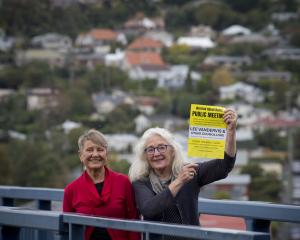
The second generation district plan (2GP) includes changes for heritage buildings in the warehouse precinct and other parts of the city, designed to make it easier to earthquake-strengthen and reuse old buildings.
Earthquake-strengthening was not even mentioned in the old district plan, which dated back to 2006.
But, under the 2GP, earthquake-strengthening would become a ''controlled activity'' where only a building's external features were protected, council city development manager Anna Johnson said.
That meant consent could not be declined, although conditions could be imposed, she said.
The aim was to encourage the earthquake-strengthening and reuse of heritage buildings, by making it easier and less costly to do so, ''but there are still rules'', she said.
''Obviously we want to ensure that any work is undertaken in a way that's sympathetic to that heritage. But they are, as far as can be allowed in terms of achieving that outcome, more permissive.''
The 2GP also created new residential heritage precincts in Dunedin - the Windle Settlement, York Pl-Stuart St-Arthur St and View St, Stafford St and City Rise.
Dr Johnson said the 2GP hearings panel had heard ''a strong representation'' from City Rise residents, who wanted stronger protection of heritage values in the area.
The new residential heritage precincts added to the existing mix of residential and townscape precincts under the old plan were identified as having a ''critical mass'' of heritage properties, she said.
In the residential precincts, owners' homes would be deemed to be protected, character-contributing or not character-contributing.
That would require owners of character-contributing buildings to seek consent for additions or alterations, beyond repairs or maintenance. That meant consent could be declined, although that would be ''quite unusual'', she said.
For non-character contributing buildings, consent could not be declined but conditions could be imposed, and new buildings would be controlled.
''It's not about stopping development ... in these areas. It's really about ensuring that what is done is sympathetic.''












